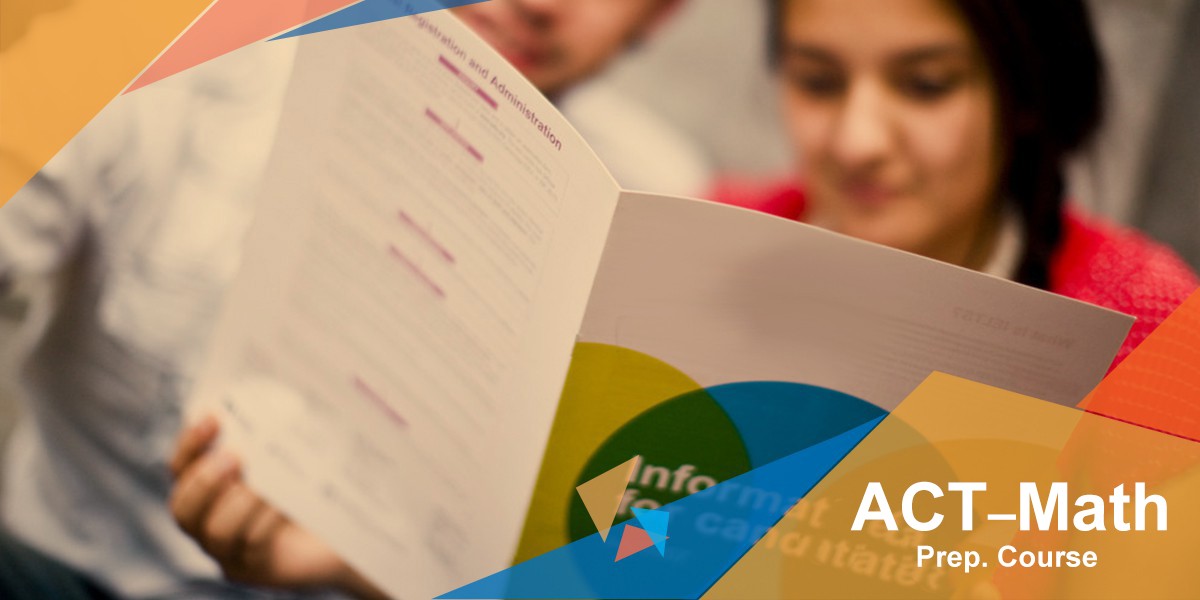الإعداد لاختبارات الإي سي تي

Introduction
24 hours (1600 QAR)
Exam Preparation Courses
Level
one-level course Intermediate
Trainers
Mazhar Tahir
Course Type
Start date
End date
Description
The ACT (American College Test) is now accepted by almost every college in America, meaning a high score can help you get into the school of your dreams. Students will understand and reason with numerical quantities in many forms, including integer and rational exponents, and vectors and matrices. Solve, graph, and model multiple types of expressions.
Who is it for?
This course is useful for the students who want to get admission in any college of America and is accepted by many other countries in the world as well as in Qatar University.
Course Outcomes :
The goals of this course are to enable the students to master all the above mentioned skills to pass the exam with higher score.
Aims of the Course
Course Outline:
The aim of this course is to focus on the approximate percentage of the section devoted to each reporting category is:
• Preparing for Higher Math (57–60%)
This category covers the more recent mathematics that students are learning, starting when students begin using algebra as a general way of expressing and solving equations. This category is divided into five subcategories.
1. Number & Quantity (7–10%) demonstrate knowledge of real and complex number systems.
2. Algebra (12–15%) solve, graph, and model multiple types of expressions. Students will employ many different kinds of equations, including
3. Functions (12–15%) the questions in this category test knowledge of function definition, notation, representation, and application.
4. Geometry (12–15%) define and apply knowledge of shapes and solids, such as congruence and similarity relationships or surface area and volume measurements
5. Statistics & Probability (8–12%) describe center and spread of distributions, apply and analyze data collection methods, understand and model relationships in bivariate data, and calculate probabilities, including the related sample spaces.
• Integrating Essential Skills (40–43%) this category focuses on measuring how well you can synthesize and apply your understandings and skills to solve more complex problems.
• Modeling this category represents all questions that involve producing, interpreting, understanding, evaluating, and improving models
The aim of this course is to focus on the approximate percentage of the section devoted to each reporting category is:
• Preparing for Higher Math (57–60%)
This category covers the more recent mathematics that students are learning, starting when students begin using algebra as a general way of expressing and solving equations. This category is divided into five subcategories.
1. Number & Quantity (7–10%) demonstrate knowledge of real and complex number systems.
2. Algebra (12–15%) solve, graph, and model multiple types of expressions. Students will employ many different kinds of equations, including
3. Functions (12–15%) the questions in this category test knowledge of function definition, notation, representation, and application.
4. Geometry (12–15%) define and apply knowledge of shapes and solids, such as congruence and similarity relationships or surface area and volume measurements
5. Statistics & Probability (8–12%) describe center and spread of distributions, apply and analyze data collection methods, understand and model relationships in bivariate data, and calculate probabilities, including the related sample spaces.
• Integrating Essential Skills (40–43%) this category focuses on measuring how well you can synthesize and apply your understandings and skills to solve more complex problems.
• Modeling this category represents all questions that involve producing, interpreting, understanding, evaluating, and improving models

